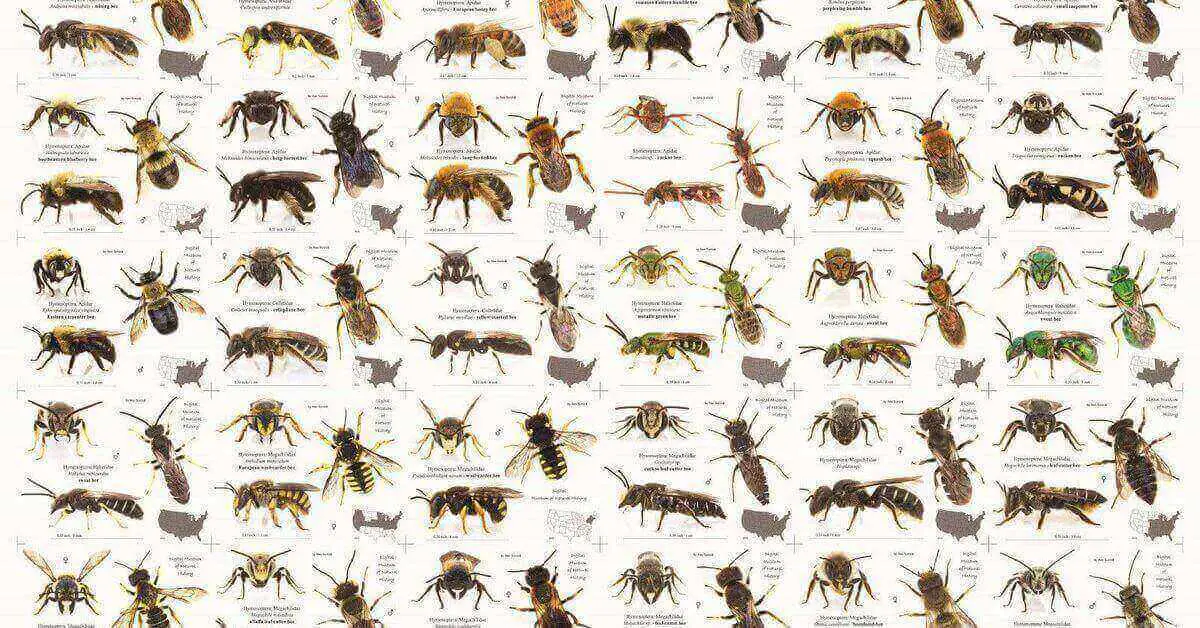Osmia atriventris is a species of solitary bee belonging to the family Megachilidae. They are commonly known as mason bees, owing to their habit of constructing nests using mud or other materials. Mason bee is found in various parts of North America, including the western United States and Canada.
| Kingdom | Animalia |
| Phylum | Arthropoda |
| Class | Insecta |
| Order | Hymenoptera |
| Family | Megachilidae |
| Genus | Osmia |
| Species | Osmia atriventris |
Do Osmia Atriventris Sting
Osmia atriventris is not aggressive and seldom stings humans. However, females can sting if they feel threatened or provoked. Their stings are not as painful as those of honeybees, but individuals who are allergic to insect stings may experience anaphylaxis in rare cases.
Lifecycle:
Osmia atriventris has a complex life cycle. The females construct nests using mud or other materials, such as resin or plant fibers. The nests typically have a series of cells, with each cell containing a single egg. The females provide the larvae with pollen and nectar, and then seal the cells with mud or other materials. The larvae develop inside the cells, feeding on the stored provisions, and then pupate. The adult bees emerge from the pupae and begin the cycle anew.
Nesting:
Osmia atriventris is a cavity-nesting species, meaning they nest in pre-existing holes in natural or artificial materials. They prefer holes that are about 6 to 8 millimeters in diameter. Mason bee females will frequently use abandoned beetle borings, such as those found in the pithy centers of hollow plant stems or in the dead wood of trees. However, they will also nest in pre-existing holes made by other insects or in artificial nesting tubes provided by beekeepers.
Related Articles:
Pollination:
Osmia atriventris is an important pollinator of fruit trees, berries, and other crops. They are particularly effective pollinators of fruit trees such as apples, cherries, and pears. The females actively collect pollen and nectar from flowers, using specialized hairs on their bodies to carry it back to their nests. During their foraging activities, they transfer pollen between flowers, facilitating cross-pollination and fruit set.
Do osmia bee make honey?
No, Osmia atriventris do not make honey. They are solitary bees, which means they do not live in colonies or produce honey like social bees such as honeybees. Instead, mason bee females construct individual nests and provide their offspring with pollen and nectar, which they collect from flowers. While they do not produce honey, they are important pollinators of many crops and play a vital role in the ecosystem.
FAQS
What is the lifecycle of Osmia Bee?
Mason bee females construct nests using mud or other materials, and lay a single egg in each cell. The larvae feed on stored provisions and pupate, before emerging as adults.
What is the nesting habit of Osmia atriventris?
Mason bee are cavity-nesting bees, preferring holes that are about 6 to 8 millimeters in diameter.
What is the role of Osmia atriventris in pollination?
Mason bee are important pollinators of fruit trees, berries, and other crops.
Can Osmia bee be kept as a domesticated bee species?
Yes, Mason bee can be kept as a domesticated bee species, often in artificial nesting tubes.
How can Osmia bee be conserved?
Conservation efforts for Osmia atriventris include protecting natural nesting sites and providing artificial nesting materials, as well as reducing pesticide use and preserving natural habitats.
Summary
Osmia atriventris is a species of solitary bee that is an important pollinator of fruit trees and other crops. They are not aggressive and seldom sting humans, but their stings can cause an allergic reaction in some individuals. Mason bee females construct nests using mud or other materials, and they prefer to nest in pre-existing holes in natural or artificial materials. mason bee is an effective pollinator due to their active pollen and nectar collection and transfer between flowers.




